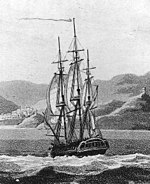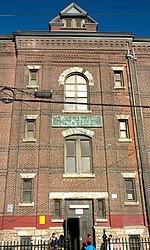Congregation Shivtei Yeshuron-Ezras Israel
1876 establishments in Pennsylvania20th-century synagogues in the United StatesAshkenazi Jewish culture in PhiladelphiaAshkenazi synagoguesJewish organizations established in 1876 ... and 7 more
Jews and Judaism in PhiladelphiaSouth PhiladelphiaSynagogues completed in 1909Synagogues in PhiladelphiaTourist attractions in PhiladelphiaUnaffiliated synagogues in PennsylvaniaUse mdy dates from December 2023

Congregation Shivtei Yeshuron Ezras Israel (Hebrew: קאנגרעגיישאן שבטי ישורון עזרת ישראל) is an unaffiliated Jewish congregation and synagogue located in the Pennsport neighborhood of South Philadelphia, Pennsylvania, in the United States. The congregation moved to its current location in 1909 and had purchased the building by 1917. It is South Philadelphia's oldest continuously active synagogue building and congregation. Religious services are lay led and conducted in the Ashkenazi rite. The congregation offers cultural events and tours open to the public.
Excerpt from the Wikipedia article Congregation Shivtei Yeshuron-Ezras Israel (License: CC BY-SA 3.0, Authors, Images).Congregation Shivtei Yeshuron-Ezras Israel
South 4th Street, Philadelphia South Philadelphia
Geographical coordinates (GPS) Address Nearby Places Show on map
Geographical coordinates (GPS)
| Latitude | Longitude |
|---|---|
| N 39.923055 ° | E -75.153276 ° |
Address
South 4th Street 2015
19148 Philadelphia, South Philadelphia
Pennsylvania, United States
Open on Google Maps







